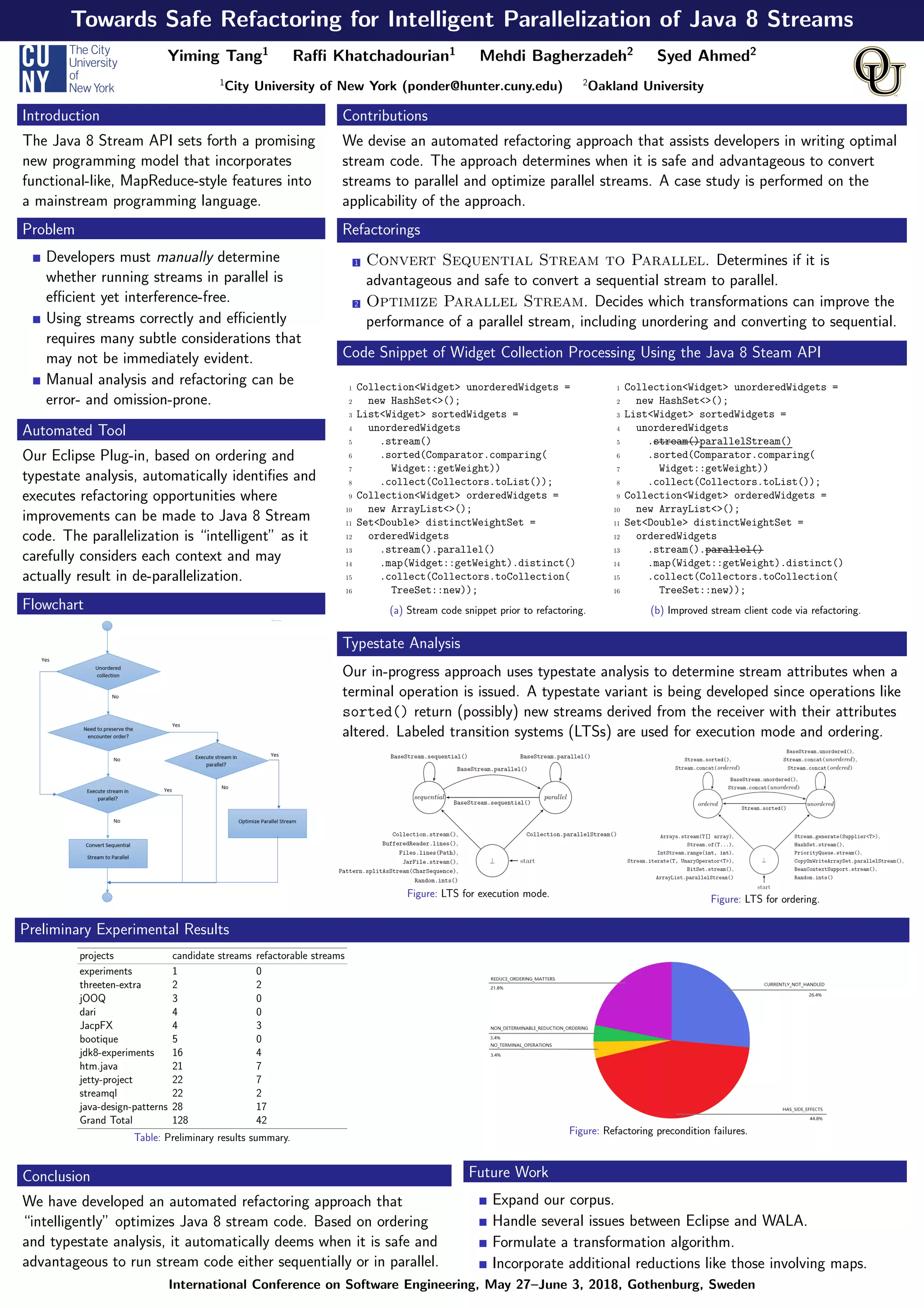The document discusses an automated refactoring tool for optimizing Java 8 stream code by determining when it is safe and advantageous to run streams in parallel or sequentially. This tool, developed as an Eclipse plug-in, utilizes ordering and typestate analysis to assist developers in efficiently parallelizing their code while avoiding common pitfalls. Preliminary experiments indicate the tool's effectiveness in identifying refactorable streams across various projects.
